Blog
Proven Tactics & Examples For Community Based Marketing You Can Use
One of the most significant trends in business is the rapid change of customer expectations when it comes to interactions with brands. According to Salesforce’s State of the Connected Customer report, “84 percent of customers say being treated like a person, not a number, is very important to winning their business.” Therefore, customers are not only seeking a great product, but an authentic human connection with both the brand and their community of customers.
They are increasingly seeing their buying decisions as reflections of their identities as well as the communities they belong to.
The intensification of relationships between customers and brands is making community based marketing a crucial component of modern marketing strategies. Not only is it becoming more effective, but customers are actually losing trust in many standard marketing practices like paid advertising and influencer promotions that brands used to rely on (only 4 percent of people trust influencers on social media), meaning that brands are left with fewer options than ever to engage their customers.
So what is community based marketing exactly? And what are its benefits? This guide is designed to help marketers and entrepreneurs understand the nuances and impact of a community based marketing strategy, including fundamental concepts and examples.
What defines a community?
Before community marketing can be defined, it is important to establish a definition of community. Community can be defined as a space where people share like-minded values and interests, and feel a connection or a belonging to something. Space, importantly for marketers, refers to an abstract idea of a shared environment, it can be online (like a newsletter or forum), or offline (like an office or apartment block). Beyond this definition, there are 3 markers that researchers say indicate a brand community:

While communities have existed for as long as human beings have, brand communities are a relatively new concept. Customers are now creating deep connections with fellow supporters of a specific brand, and even the brands themselves. The rise of brand communities marks a new opportunity for marketers to connect deeply with their customers.
Why are brand communities so powerful?
Brand communities are powerful because they tap into the social and emotional needs of human beings. They create tight-knit associations between a person's identity and the brands they choose to support.
One study on multiple “love” and “hate” brand communities shows that members of “love” communities “are more motivated by emotions, passion, and validation.” People use brand communities to express passion and have that passion reflected back through relationships with other community members. Brand communities are also powerful because of their self-supporting nature. Community members maintain active relationships with each other, often without the need for a brand to interject.
Marketers have known that communities are a powerful source of brand advocacy, but creating them or connecting with them has been a difficult process. Community based marketing has risen from the need to have systems and principles that can help guide marketers to better connect with groups of dedicated customers.
What does community marketing entail?
Community marketing is the connection of a brand to a specific community, using a platform to communicate, exchange values and create mutual meaning. The platform does not have to be digital, and communities do not have to be started from scratch.
Brands can choose to work with established groups or create their own. Either way, community-building requires marketers to start conversations, establish opportunities for connection (like events or groups) and create meaningful traditions.
Community-building is a long-term process that requires care and consistency. At its core, it is about relationship building, and strong relationships require trust and time to flourish. It also requires marketers to relinquish control to their advocates, who won’t always agree with a brand’s ideas or point-of-view.
So, with much more straightforward, data-driven options like social media marketing and advertising, why should community marketing be part of the strategy?
What are the benefits and drawbacks of community marketing?

Percentage of customers that say they share good experiences with others
Benefits
1. Better customer experience
Put simply, brands that provide incredible customer experience see major boosts to their revenue.
Community marketing, when done correctly, gives marketers a better understanding of their customers and provides an extremely authentic touch point for a number of initiatives like handling customer complaints, gathering product feedback, nurturing advocates and much more. The insight of active community members can provide a treasure trove of information that helps brands figure out how to deliver the most well thought out experience.
2. More relevance and loyalty
Effective loyalty programs inspire customers to repurchase and build a consistent relationship with brands. For marketers, it's an incredible system that keeps acquisition costs down and builds brand equity. Unfortunately, building loyalty programs is not easy.
According to consulting firm Kantar, 71 percent of consumers now claim that loyalty incentive-programs don’t make them loyal at all. Incentivising customers to repurchase is no longer enough, loyalty programs need to be more relevant and varied, allowing customers other ways to build a relationship with brand.
For brands, that means maintaining a constant and timely symbiotic relationship. A strong community helps build this consistency as community members are interacting with each other and relying on each other for purchasing decisions. In the case of communities with online platforms, brands can also be quick to respond to questions or complaints, adding another layer of responsiveness that pushes potential customers in the right direction at the right time.
3. Word of mouth growth
72 percent of customers stated in a survey that they are willing to share good experiences with others (62 percent also said they would share bad experiences with others). Strong communities are filled with willing advocates that recommend products and vouch for a brand. Depending on the way a community is set up, they can also grow organically as members invite their networks to join.
Building great brand communities creates a channel that can lead to great market insight and organic growth through word of mouth.
4. Brand and customer humanization
A common theme mentioned throughout this guide is the importance of brand authenticity. Marketing often feels hollow or inauthentic when trying to make customers feel like their human needs are considered.
Good community marketing gets around this issue by putting the power in the hands of community members themselves. Members will share their honest opinions on products (for better and worse), post authentic user generated content and create their own unique relationships that cannot be replicated by a brand. The end result is a more human, authentic experience for brand fans.
Drawbacks
1. Unique skill set required
Community based marketing looks intuitive at surface level, but is incredibly difficult to do. Many of the principles of community-building are in direct opposition to traditional performance marketing. It is difficult to track the impact of communities, and it is difficult to create highly targeted messaging. Brands also must be willing to face negative reviews with honesty, speak frankly and work closely with members to understand their needs.
Marketers also need to be extremely authentic in their communication and constantly fine-tuning their approach based on how community members are responding. Members can quickly turn on brands that fail to sound authentic across any single touch point.
2. Long term approach
While not exactly a negative, marketers need to understand that a community strategy is long-term. Attempting to work with a community to boost sales immediately or launch an ad campaign can backfire quickly.
Community marketers will need to be prepared to focus on long-term brand building and customer experience, which can often mean foregoing short-term campaigns or targets.
3. High commitment
Similar to the need for long-termism, community marketing requires marketers to invest time into building or supporting community infrastructure, listening to members, taking in information and communicating constantly. Speed, personalisation and authenticity are major benefits in community-marketing, but they require a team's constant attention.
Great examples of community marketing
1. Lego Ideas
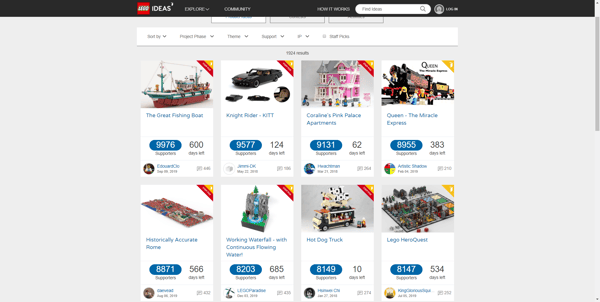
Lego’s community is an excellent example of community based marketing, which manifests in the form of a web platform called Lego Ideas. The platform allows community members to share visual ideas for new products and proudly present creations they’ve made using Lego. Members can then vote and comment on specific ideas.
Lego has been nurturing this community since 2014 and is able to approach it with nuance—Lego moderates the ideas lightly but otherwise allows their members’ creativity to flourish, and Lego provides incentives and positive interactions by showcasing specific ideas from members and even selecting a few to launch as branded products.
2. Frugi Family
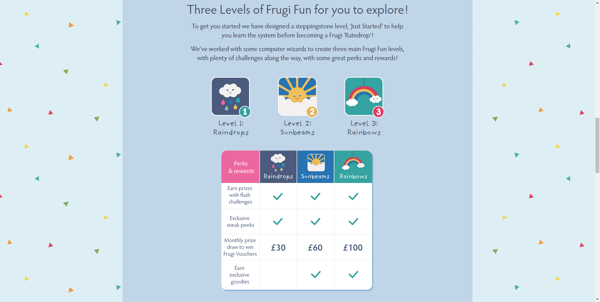
Frugi -a sustainable childrenswear brand- have a community of passionate parents that share ideas and photos of their family through both a dedicated Facebook group and a brand new advocacy program. Frugi’s Facebook group is filled with passionate customers having conversations and sharing their favourite moments. The advocacy program is a more structured system that motivates customers to share stories, refer friends and complete activities for specific rewards.
Frugi’s approach to community marketing shows that multiple platforms and strategies can be combined to connect with passionate customers. Each platform has a different purpose and approach, but all touch points lead to the strengthening of one collective group of dedicated customers. Check out the case study below if you would like a more in-depth view into Frugi's community and program.
3. Lululemon
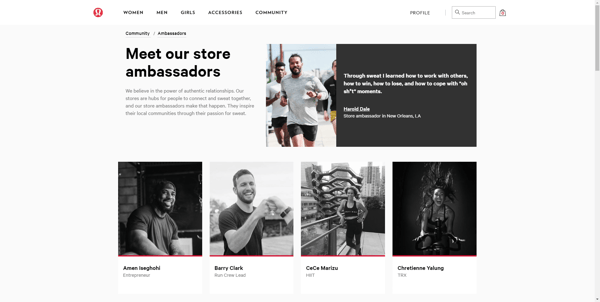
Lululemon’s unique community building strategy has led to their incredible growth and success as a fashion retailer. Instead of relying on digital platforms, their strategy focuses on localised communities that operate in the physical world. Relationships with local leaders like yoga instructors and fitness studio owners are nurtured through product sponsorship and other forms of collaboration.
The control of these relationships are also local—Lululemon trusts stores to build these connections instead of controlling them from a centralised headquarters. It is much easier for locals to connect with each other in a mutually understood culture, and meeting face-to-face only makes the connections more powerful.
4. Adidas Creator’s Club
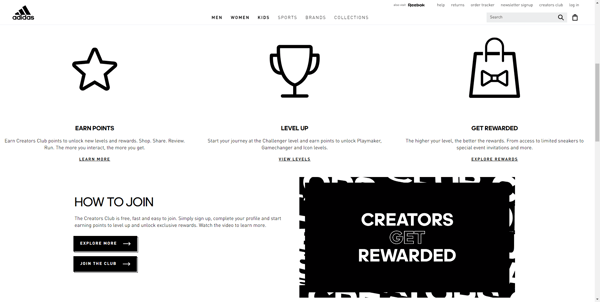
The Adidas Creator’s Club is a very robust program that builds community through a rewards program. Community members can complete activities like uploading images or participating in a workout to receive rewards like early access to sales, product discounts or exclusive invites to events.
Adidas’ approach to community building is much more directly involved than a program like Lego’s. They establish the activities, rewards and exclusivity themselves, which takes skill and a deep level of customer understanding to set up properly.
What are the tactics involved in community marketing?
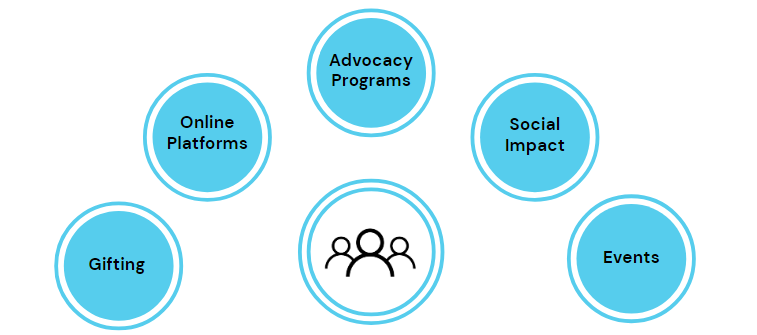
The clarity of community marketing’s value in a modern and connected world is clear. What is still difficult to understand are the specific methods and tools that can be used to create and drive excellent brand communities.
1. Create advocacy and ambassador programs
Advocates and ambassadors are anchors of a community, driving conversations, setting up events and making newcomers feel welcome when they join. When tapping into brand communities, advocates are extremely important.
Brands need to be able to connect with these advocates and motivate them to contribute to communities, and this can be done in the form of an advocacy program or ambassador program.
An advocacy program is a system that rewards and encourages customers to advocate on behalf of a brand. These programs are often set up as rewards programs, VIP clubs, or even paid ambassador positions.
If you are interested in learning how to create an advocacy program, read our guide here.
2. Online platforms
Online platforms like Lego Ideas or even Facebook groups are an easy way to connect to communities that need a digital place to coalesce. Marketers can create this space and moderate it to start conversations, communicate offers and gather feedback.
Once again, it’s important to understand the balance of control that customers expect. If brand activity overshadows community relationships, customers may turn against the brand or abandon the group if they feel it is becoming a one-to-many advertising channel instead of a space for people to connect and share.
3. Support a social cause (and mean it)
One of the most powerful tools that marketers have when it comes to building communities is the support of social causes. People naturally form strong bonds when it comes to supporting causes they are passionate about, something made evident by the global wave of climate protests that bloomed from a single activist in Sweden. Bonds like this aren’t just limited to other people—76 percent of consumers expect brands to have a positive social impact on the communities in which they do business.
Marketers can get behind causes in a number of ways, including sponsoring social organisations, hosting events or making charitable donations. The most crucial component of this method is for brands to prove themselves to customers. Pepsi, for example, was accused of being tone-deaf for producing a human rights themed advertisement featuring Kendall Jenner. Consumers quickly pointed out the advertisement’s lack of authenticity and spread the word throughout their networks.
4. Host events
Events are a straightforward tool for creating shared meaning and traditions within a community. Physical events are especially effective since they provide space for people to interact face-to-face and potentially meet the human beings behind a brand.
Events are typically neither easy nor cheap to plan, so it is important to first understand what would compel people to show up, and how to keep them engaged thereafter.
5. Gifting
Gifting is one of the tools that Lululemon used to to quickly grow out local communities. Local ambassadors would get gifts like yoga mats that could then be passed on to a fitness studio or instructor's clients. Gifting creates tangible value for a customer and boosts their sense of good faith. However it's no silver bullet, gifts are not samples—they should not be given with the expectation of a future purchase. Gifts should also be relevant to both the brand and the community to ensure the best match of value to community member.
How is community marketing measured?
The greatest barrier for marketers to implement a community based marketing strategy is the difficulty in measuring success. There are no industry established community marketing metrics that can quantify an initiative, and much of the value in community marketing is tracked through qualitative study and observation.
With that being said, the impact of community marketing can still be measured through standard goal setting techniques. Marketers can use the straightforward order of setting an objective, measurable goal, tactic and cost.
Objective → Measurable Goal → Tactic → Cost
| Objective | Measurable Goal | Tactic | Cost |
| Increase sales of running shoes this summer | Generate $3.4M in sales from running shoes by end of August 2020 | Gift 5,000 pairs of running shoes to running clubs | $500,000 |
To get the most value out of community marketing measurements, the process should be iterative—marketers should be determining whether their tactics failed or succeeded, and then continue refining their approaches. Iterating like this gives community marketers more consistent data to work with.
The ambiguity of measuring communities makes it more difficult to track, but even trackable initiatives like influencer marketing are getting more ineffective. Many brands are taking a leap of faith by investing in community, and it is paying off because it leads to experiences that match the incredibly high expectations of customers.
People are the focus of great communities
Communities build reputation and setup brands for resilient growth in the long-term. For brands, the most important consideration is to first carry a strong sense of empathy for customers and community members, and then consistently create communication and traditions that help solidify relationships.
The marketers that get this right will build brands that are perfectly matched with the needs and behaviour of customers in the coming decade.
Want to try it for yourself? Download our template and get started on building your own brand community.



